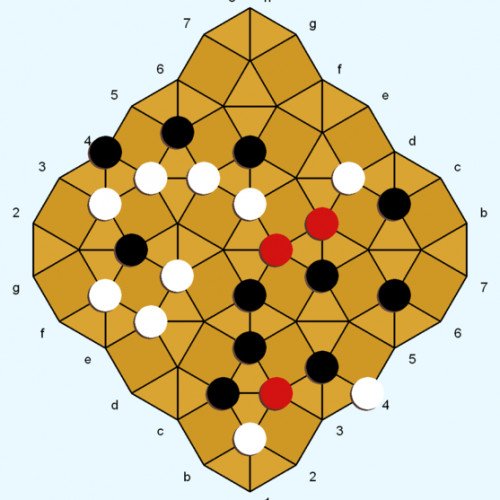CHECKERS VS DIAMOND

CHECKERS
Draughts (/drɑːfts, dræfts/; British English) or checkers (American English) is a group of strategy board games for two players which involve diagonal moves of uniform game pieces and mandatory captures by jumping over opponent pieces. Draughts developed from alquerque. The name 'draughts' derives from the verb to draw or to move, wheras 'checkers' derives from the checkered board which the game is played on. The most popular forms are English draughts, also called American checkers, played on an 8×8 checkerboard; Russian draughts, also played on an 8×8, and international draughts, played on a 10×10 board. There are many other variants played on 8×8 boards. Canadian checkers and Singaporean/Malaysian checkers (also locally known as dum) are played on a 12×12 board. English draughts was weakly solved in 2007 by a team of Canadian computer scientists led by Jonathan Schaeffer. From the standard starting position, both players can guarantee a draw with perfect play. Draughts is played by two opponents, on opposite sides of the gameboard. One player has the dark pieces; the other has the light pieces. Players alternate turns. A player may not move an opponent's piece. A move consists of moving a piece diagonally to an adjacent unoccupied square. If the adjacent square contains an opponent's piece, and the square immediately beyond it is vacant, the piece may be captured (and removed from the game) by jumping over it. Only the dark squares of the checkered board are used. A piece may move only diagonally into an unoccupied square. When presented, capturing is mandatory in most official rules, although some rule variations make capturing optional. In almost all variants, the player without pieces remaining, or who cannot move due to being blocked, loses the game.
Statistics for this Xoptio

DIAMOND
Diamond is a two-player abstract strategy board game invented by Larry Back. The invention was inspired by the game Kensington, which uses a similar board pattern and game objective. Rules for Diamond were conceived in 1985 and finalized in 1994. Diamond introduces a new board geometry and neutral pieces, with the aim of enhancing the game dynamic and lowering the potential for draws. Diamond was featured in the February 2013 issue of Games magazine. The Diamond gameboard consists of interlocking squares and triangles. White and Black each control 12 game pieces of their own color. Neutral pieces (red-colored in the diagrams) enter the game via captures. The pieces are played on the line intersections (called points, as in Go). White and black (but not red) pieces can move along straight lines to adjacent unoccupied points. A player wins by being the first to occupy all four corners (points) of a board square with their pieces. Capturing moves are possible in the Movement phase. If the points of a triangle contain exactly one white and one black piece, either player can capture the opponent piece by occupying the remaining open point ("cornering" the enemy piece on the triangle). The captured piece can be cornered on one triangle (see Example 1), or simultaneously cornered on two different triangles (Example 4). The captured piece is immediately removed from the game and replaced on its point by a neutral piece. If a move simultaneously corners two opponent pieces on two different triangles, then neither enemy piece is captured (Examples 2 and 3). A piece can move safely to a triangle point even if the other two points of the triangle are occupied by enemy pieces (Example 5).